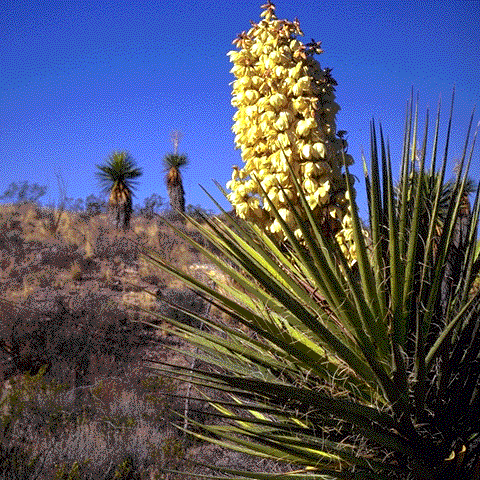
Best friends depend on each other—even if your best friend is your pet! There are "best friends" in nature, too&Mdash;and sometimes they are very different species. Take our beautiful yucca plants. They depend on a moth, of all things, to reproduce! Likewise, the moth cannot reproduce without the yucca.
The yucca moth, as it is commonly known, gathers a ball of pollen and carries it, using specialized mouth parts, to another yucca. She lays an egg near where the seeds will develop and then pushes the pollen into the yucca's pollen receptacle.
Although many plants have animal pollinators, the animals rarely deliberately pollinate. The moth's actions, however, though instinctual, appear intentional.
When the moth larva hatches, maturing seeds are ready to eat. The larva
eats some of the seeds, giving it enough energy to grow into an adult. But it also
leaves enough seeds for the yuccas to successfully reproduce.  What a beautiful example of a plant and animal
working together for their common good!
What a beautiful example of a plant and animal
working together for their common good!
Listen to the Audio (mp3 format) as recorded by KTEP, Public Radio for the Southwest.
Contributor: Kodi R. Jeffery, Centennial Museum, University of Texas at El Paso.
Desert Diary is a joint production of the Centennial Museum and KTEP National Public Radio at the University of Texas at El Paso.

Yucca torreyi. Photograph by Wynn Anderson.
Hauth, K. B. 1996. Night Life of the Yucca. The Story of a Flower and a Moth. Harbinger House, Boulder, 31 pp.